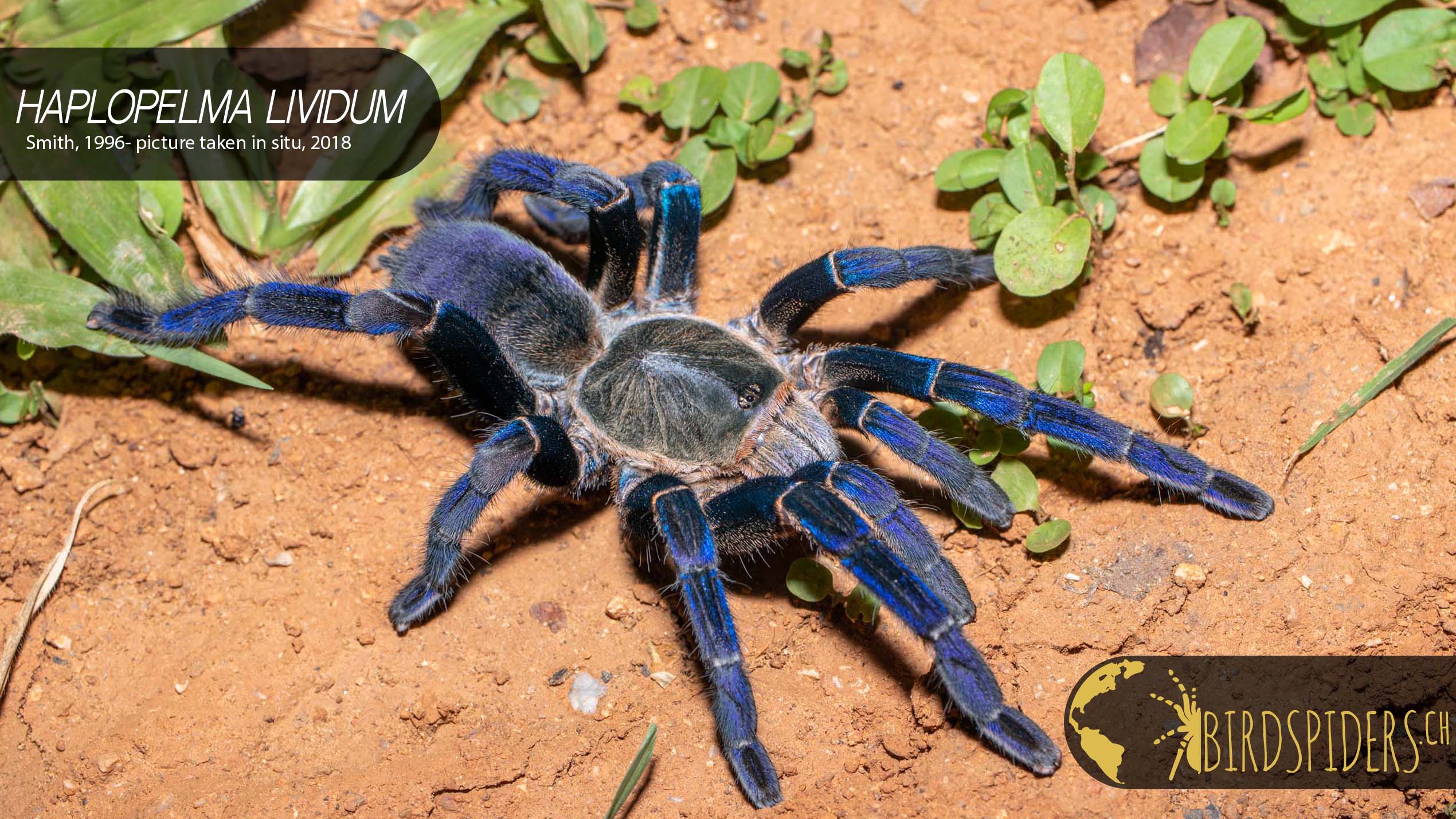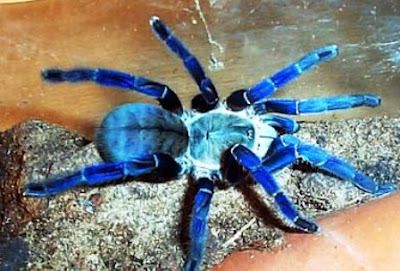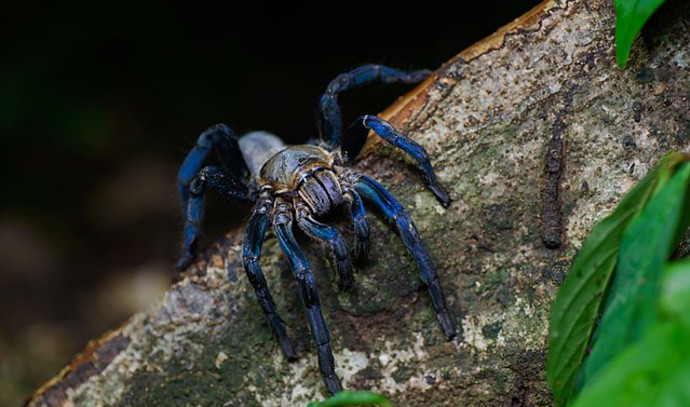Introduction:
Cobalt blue tarantula, The world of arachnids is home to a myriad of species, each uniquely adapted to its environment. Among these, the Cobalt Blue Tarantula (Haplopelma lividum) stands out as a stunning and intriguing arachnid species. Renowned for its vibrant cobalt-blue coloration and distinctive behaviors, this tarantula captivates both arachnid enthusiasts and researchers alike. In this article, we will explore the characteristics, habitat, behavior, and significance of the Cobalt Blue Tarantula.

Physical Characteristics:
The most striking feature of the Cobalt Blue Tarantula is undoubtedly its vibrant coloration. The exoskeleton of this tarantula species exhibits a deep and iridescent cobalt-blue hue, creating a visually stunning appearance that distinguishes it from other tarantula species. This vivid coloration is especially pronounced in mature individuals and plays a crucial role in attracting mates during the breeding season.
Apart from its mesmerizing color, the Cobalt Blue Tarantula boasts a robust and compact build. On average, mature individuals can have a leg span ranging from 5 to 6 inches, making them a medium-sized tarantula species. The body is covered in fine, velvety hairs, contributing to its overall captivating appearance.
Habitat and Distribution:
The native habitat of the Cobalt Blue Tarantula is the evergreen and deciduous forests of Southeast Asia, with a primary distribution in Thailand, Myanmar, and parts of Malaysia. Within these regions, these tarantulas can be found in burrows they construct for shelter. The burrows are often lined with silk, providing a secure retreat for the tarantula to hide from predators and harsh weather conditions.
The tropical climate of Southeast Asia provides an ideal environment for the Cobalt Blue Tarantula to thrive. The combination of high humidity levels and warm temperatures contributes to the tarantula’s overall well-being. However, despite their adaptability, the Cobalt Blue Tarantula is facing threats due to habitat loss and illegal pet trade, raising concerns about their long-term survival in the wild.
Behavior and Feeding Habits:
The Cobalt Blue Tarantula is a nocturnal and solitary creature, primarily active during the night. It is an ambush predator, patiently waiting in its burrow for unsuspecting prey to pass by. When prey is detected, the tarantula swiftly pounces, injecting venom into its victim to immobilize and digest it. The diet of the Cobalt Blue Tarantula consists mainly of insects, small arthropods, and occasionally small vertebrates.
The venom of the Cobalt Blue Tarantula contains a combination of toxins designed to subdue prey. While the venom is not considered lethal to humans, it can cause discomfort and mild reactions in those who come into contact with it. As with many tarantula species, the Cobalt Blue Tarantula plays a crucial role in controlling insect populations in its ecosystem, contributing to the delicate balance of the food chain.

Reproduction and Mating Behavior:
The reproductive behavior of the Cobalt Blue Tarantula is a fascinating aspect of its life cycle. During the mating season, male tarantulas embark on a journey in search of a potential mate. When a receptive female is located, the male engages in a complex courtship ritual, involving drumming and tapping on the female’s burrow to signal his intentions. If the female is receptive, the mating process begins.
Following successful mating, the female Cobalt Blue Tarantula lays a silk cocoon containing hundreds of eggs. She guards the cocoon vigilantly, ensuring the eggs remain protected from potential threats. The spiderlings, upon hatching, undergo a vulnerable stage before reaching maturity. This intricate process of reproduction is essential for maintaining the population of the species in their natural habitat.
MUST READ=Un Verano Sin Ti Merch
Conservation Challenges:
Despite their resilience and adaptability, Cobalt Blue Tarantulas face several conservation challenges. Habitat destruction, primarily due to deforestation and urbanization, poses a significant threat to their survival. Additionally, the illegal pet trade has led to a decline in wild populations, as these stunning arachnids are often sought after by collectors and enthusiasts.

Conservation efforts are crucial to ensure the long-term viability of the Cobalt Blue Tarantula. This involves protecting their natural habitats, implementing sustainable practices, and raising awareness about the importance of preserving biodiversity. Responsible breeding programs in captivity can also contribute to maintaining healthy populations and reducing the demand for wild-caught specimens.
Conclusion:
The Cobalt Blue Tarantula stands as a testament to the marvels of nature, showcasing the intricate beauty and adaptations of arachnid life. From its captivating cobalt-blue coloration to its unique behaviors and ecological significance, this tarantula species continues to captivate the imaginations of scientists, enthusiasts, and nature lovers alike. As we navigate the delicate balance between human activities and the conservation of biodiversity, it is essential to appreciate and protect the wonders of the natural world, ensuring the survival of species like the Cobalt Blue Tarantula for generations to come.
